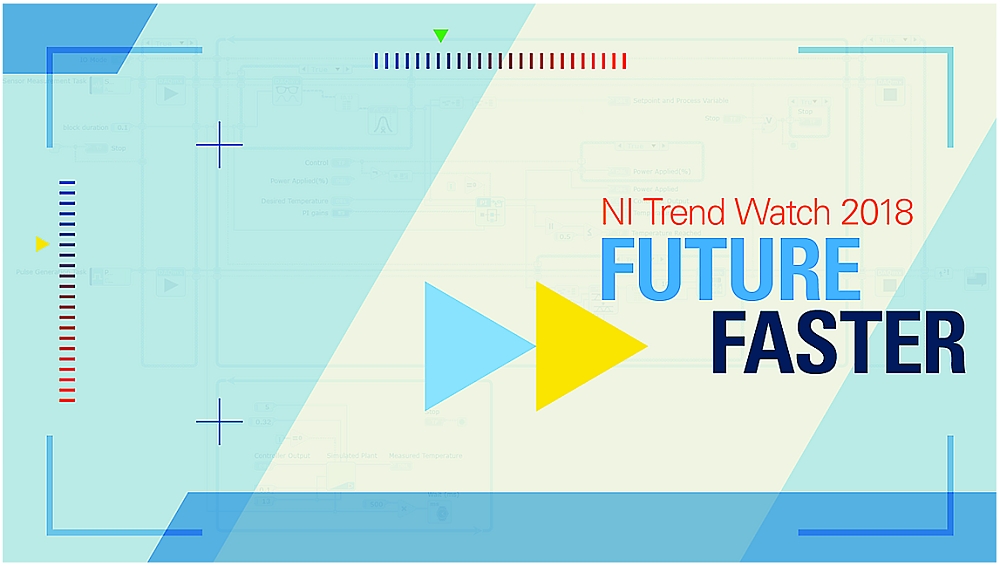- Each year, National Instruments offers a study which presents the main technological trends identified by the Texas manufacturer, which will impact the future test and measurement applications.
- In the NI Trend Watch 2018, National Instruments focuses on the learning machine for the Internet of Things, next-generation (5G) mobile telephony and electric vehicles.
Main themes covered in NI Trend Watch 2018:
- Machine learning: Electronic systems and equipment produce ever-increasing amounts of data. This means implementing appropriate processing solutions to meet the Big Data challenge. This article explains how machine learning, or automatic learning, can address this problem.
- 5G Telecommunication: the design of future equipment and components for mobile telephony to the 5G standard implies the development of test solutions meeting specific requirements. 5G requires a different approach to test wireless communication systems than has been the case up to now.
- Industrial Object Internet (IIoT): the multiplication of intelligent and connected “objects” exploited in industrial applications promises to improve performance and reduce operating costs. However, the management of these distributed systems still presents difficulties that are often undervalued. Overview of the three essential requirements for a proper management of these “objects”.
- Electric vehicles: the gradual transition from combustion and hybrid engines to all-electric engines leads to significant changes in the design of vehicles and the infrastructure required for their use.
- End of Moore’s Law: the pace of innovation has followed Moore’s law curve for decades, despite some minor revisions and many discussions predicting its end. However, now over 50 years old, this famous law is again in jeopardy. What impact will this have on the future of the semiconductor market?
Moore’s laws are often used to evoke the ever-growing power of microprocessors, computers and digital data processing units. These empirical laws are named after Gordon Moore, co-founder of Intel, who as stated in 1965 that the number of transistors integrated on a chip of equivalent size would double every year at constant prices. The rate of increase was then set at 18 months. Moore’s laws have so far been verified. Gordon Moore pointed out, however, in 1997 that this exponential growth would deal with from 2017 against a physical limit linked to the size of atoms .
The full report can be downloaded from www.ni.com/trend-watch







